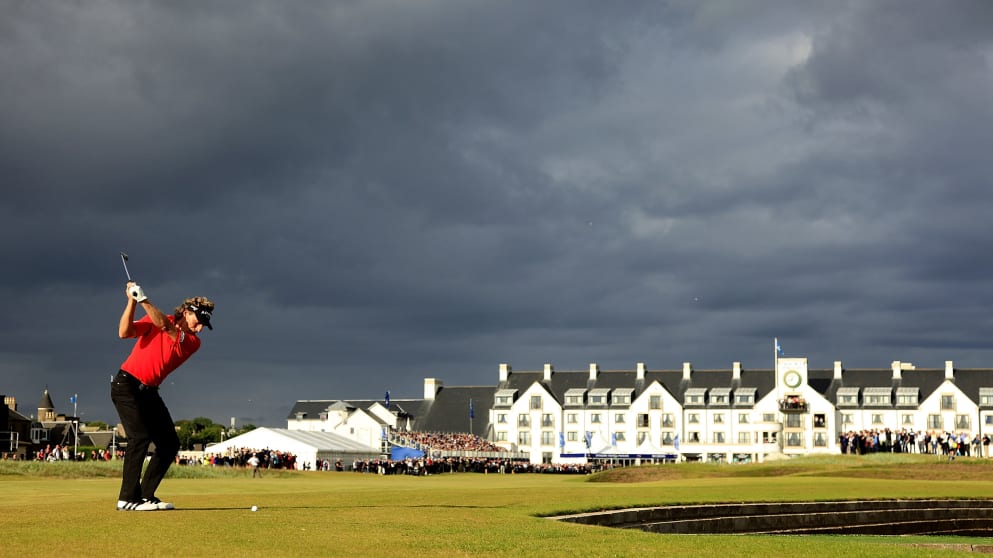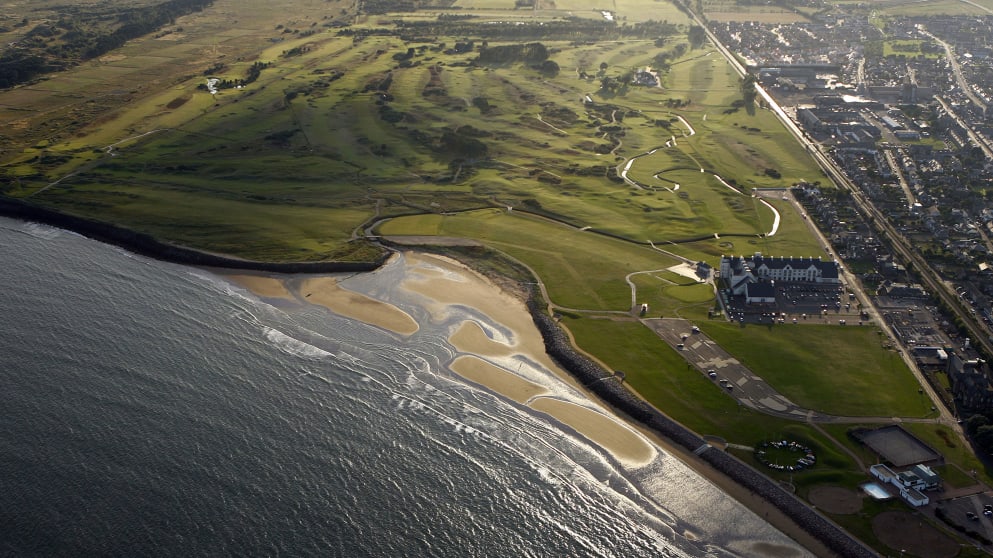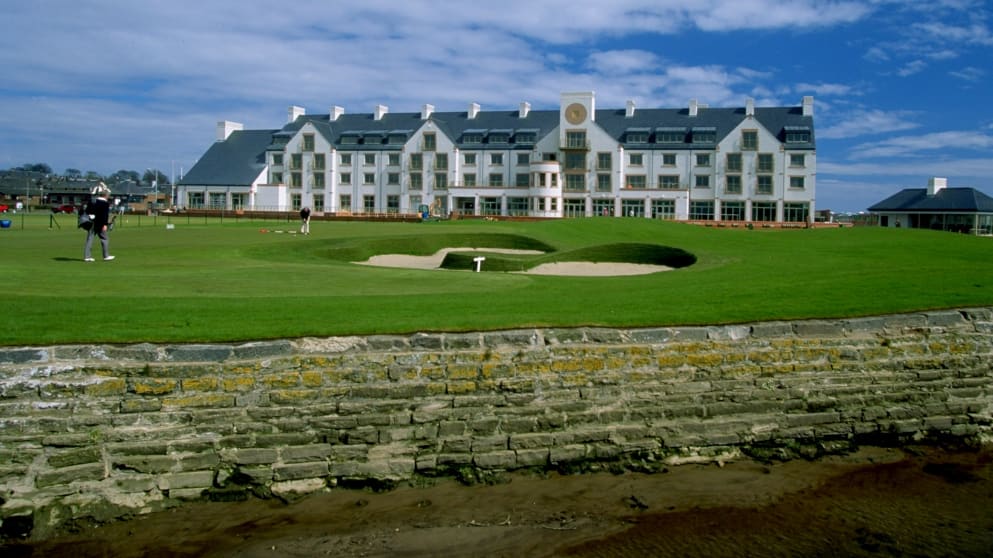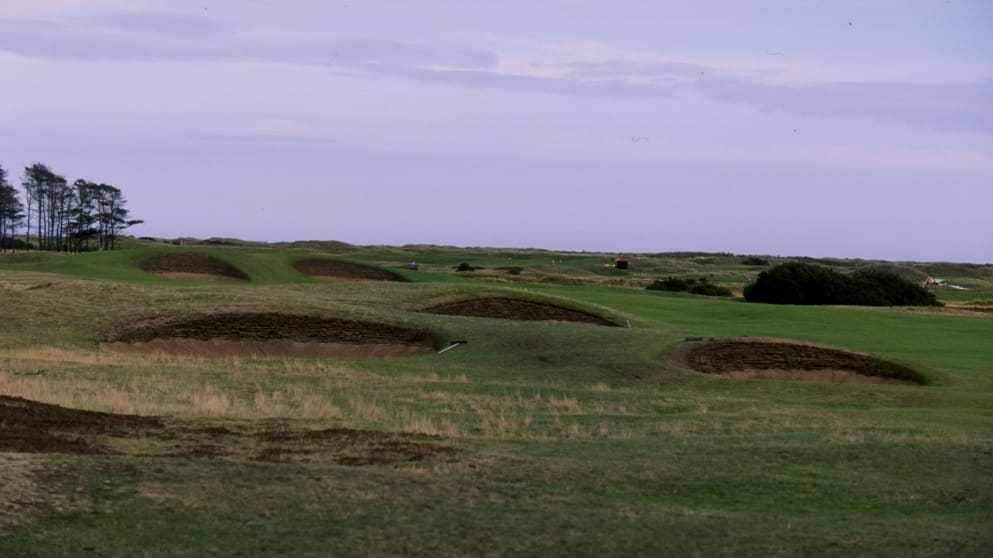
Ahead of the 30th anniversary of the Senior Open championship we take a look at Carnoustie's infamous history and get some key pointers from Head Greenkeeper Craig Boath, who has 20 years experience on the prestigious links course.
The History
Few would believe it, but local parish records show golf being played at Carnoustie as early as the 16th century. Carnoustie’s first golfer may have been a man by the name of Sir Robert Maule (1497-1560), a local landowner who was apparently drawn to “hawking, hunting and the gawf”.
While we can’t know exactly when or where it was that this ‘gawf’ was played at the site of modern day Carnoustie, we do know that by 1839 Carnoustie Golf Club had been formed.
In the early days, Carnoustie existed as a 10-hole course designed by Allan Robertson, the first man to be acknowledged as a professional golfer. It was later expanded to an 18-hole course but it wasn’t until 1926 that James Baird instituted the changes that readied the course to receive its first Open Championship.

Carnoustie first played host to The Open in 1931, won by Tommy Armour, and since then has hosted it 6 more Open Championships: 1937 (Henry Cotton), 1953 (Ben Hogan), 1968 (Gary Player), 1975 (Tom Watson), 1999 (Paul Lawrie) and most recently in 2007 (Padraig Harrington). It is set to stage The Open for the eighth time in 2018.
The honour of hosting such a momentous tournament comes with some memorable moments. Perhaps the most famous display of Carnoustie’s deadly pitfalls was during The 1999 Open when Jean van de Velde, who only needed a double bogey on the last hole to win, duly scored a triple bogey seven to make it a three way play off. It is of no surprise that in North America the course is nick named ‘Car-nasty’ and is considered the toughest course on the Open rota.

The Course
No report on the Carnoustie Championship course is worth reading without detailing the brutal holes that have seen so many good rounds ruined. The last nine holes at Carnoustie are considered some of the toughest and best in championship golf, and Carnoustie’s Head Greenkeeper, Craig Boath, believes titles are won and lost on the back nine.
Boath has 20-years experience of tending the grounds at Carnoustie, and there is perhaps no better person better placed to discuss the hazards of the Championship course.
He said: “You have got to play well coming in. That’s where Championship winners are made”.
Nerves of steel are a must have on the final stretch. “The (Barry) Burn comes into play and we’ve all seen what can happen,” said Boath. The infamous Barry Burn is a snaking stretch of water that loops around the finishing holes. In fact, you must cross it no less than five times in the final two holes.
“There’s a lot happening on the final stretch, and people are moving up and down the leaderboard all the time,” he added. “You’ve got to really concentrate, and a lot of it depends on which way the wind is going.
“The last four holes really stand out to me. Across the entire course, no two holes go the same way, so the wind really can play a big part.
“On the 15th, if the wind is going with you, you don’t want to hit too good a drive – your position on the fairway is key for your second shot because it’s a tricky approach. “On 18, the Burn and bunkers come into play in a big way. It’s a tricky hole anyway but, on tournament weekends with the grandstand and spectators around the green, it really does tighten up.”

Burns are not the only difficulty to contend with here. Carnoustie features an array of alarmingly difficult bunker complexes, some so deep that amateurs wishing to escape may be better suited to a bucket and spade than the traditional wedge.
One such example is the par five 6th which measures 520 yards and features the infamous ‘Hogan’s Alley’. This comprises two bunkers in the middle of the fairway and one to the right meaning that an intimidating tee shot awaits.

Carnoustie also hosts what is widely regarded as the ‘hardest par three in golf’, the 255-yard par three 16th. This hole is difficult in a downwind, and into an easterly wind it is practically impossible. Distance is not the only defence this hole possesses. Boath tells us that the hole’s exposure to wind makes it easy to “go off the side of the green” which brings the bunkers into play.
When you consider that having finished this hole you must play the over 400-yard par four 17th which features an almost island-like green encircled by Barry Burn and is a hole you must play “going back into the wind”, you begin to form a picture of how tough this course really is.
While Carnoustie is not as picturesque as other links courses, it is incredibly tough. Senior Tour members must bring their A-game if they are to tame this famous course. While there are few things that you can say to a player to quell his nerves before stepping out onto the hallowed turf of Carnoustie, Craig Boath has one final bit of wisdom to impart.
“Whoever wins will need to keep calm, and not think too much about the course. You’ve just got to play your way round it and keep your cool. If you keep out of trouble, you’ll do well, but that’s easier said than done”.

The Senior Open was last played here in 2010 when Bernard Langer conquered the course with a score of five under par. That is quite some score when you consider the numerous challenges that Carnoustie Championship course forces you to confront.
The Legacy

Carnoustie is a venue that all golfers should pay homage to at least once. This special course has now played host to seven Open Championships, one Women’s Open Championship and one Senior Open Championship.
If you are in any doubt as to the quality of the course, you need only look to the Boath who explains: “I’ve got a good team with me and they have all been here a long time. A lot of them have got tournament experience, which is important. They know what they are doing.
“We’re always preparing the course as if there is a tournament taking place that day. It might be a once in a life time experience for guests who visit the course to play, and it’s up to us to give them a tournament-standard course”.







